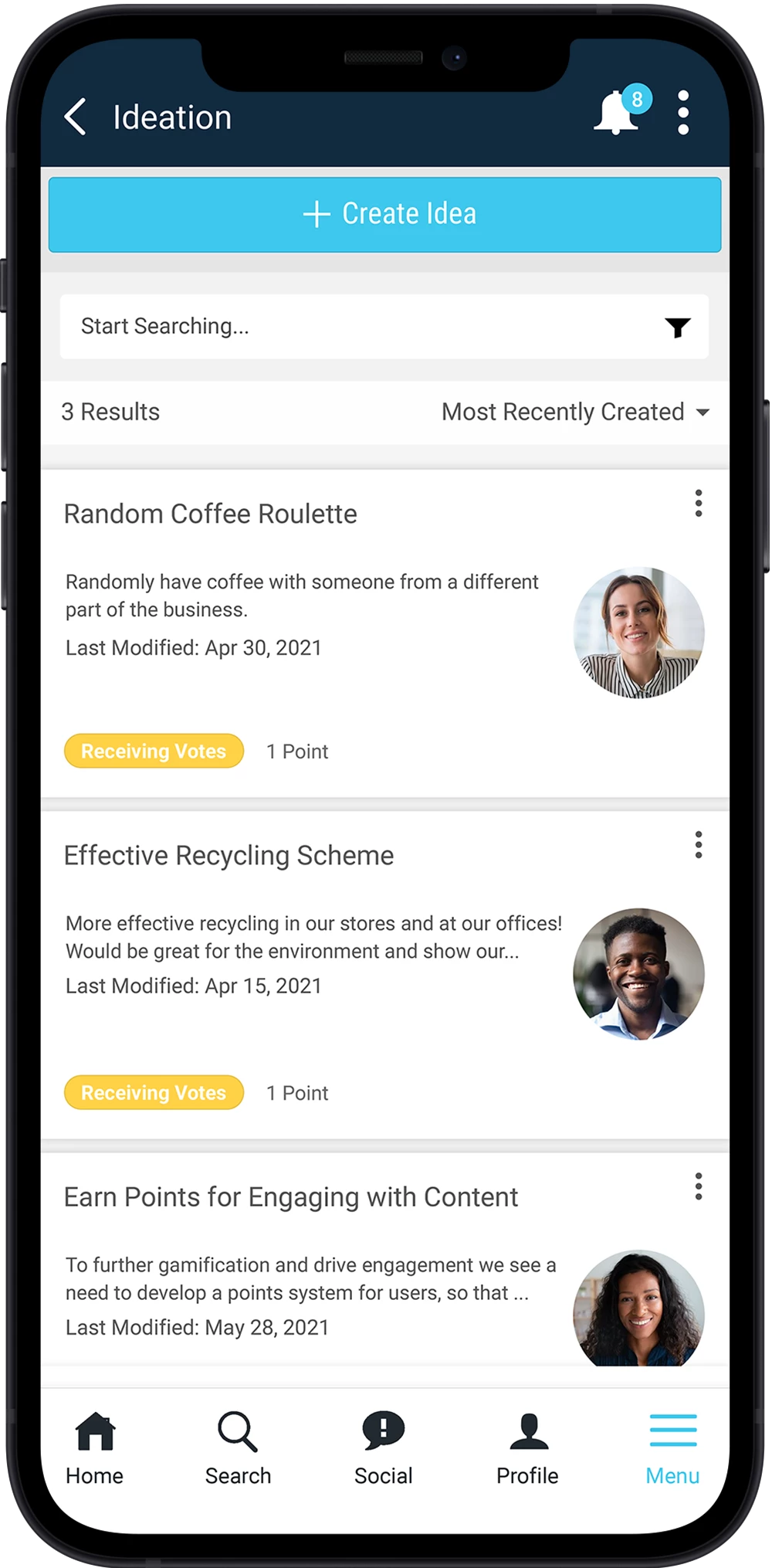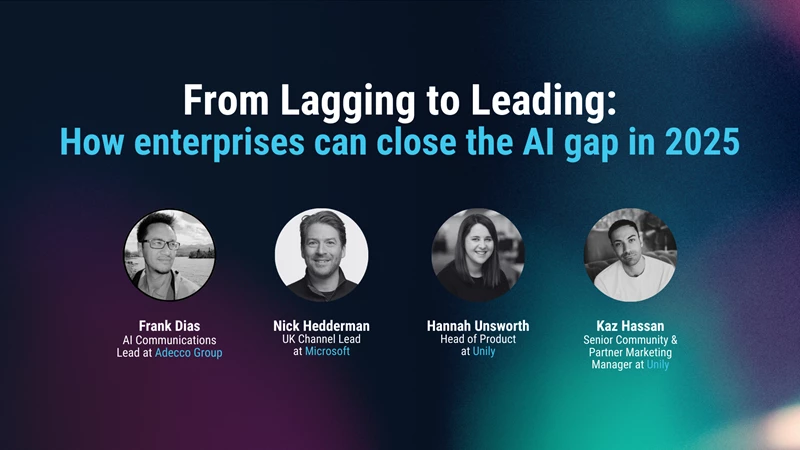7 digital employee experience trends CIOs should be watching in 2023
With employee engagement dominating the enterprise agenda, every department is being asked to play its part in improving the employee experience. For CIOs, that means taking a close look at how workplace technology is enabling or holding back employee engagement. So, what are savvy CIOs focusing on to move the dial in 2023?

The 2023 landscape for CIOs
Over the past three years, the CIO’s main priorities have revolved around being reactive to the changing ways of work. But now that all the quick, responsive rollouts have been completed, there is finally the opportunity for CIOs to sit back, survey their IT estates, and begin to make some smarter choices and changes.
However, it’s expected that the time CIOs will have to make these decisions is much shorter than they’d prefer due to external market factors including economic pressures. Gartner’s research found that for 2023, four out of five CEOs are increasing digital technology investments to counter such pressures as inflation, scarce talent, and supply constraints. So, CIOs will be tasked with executing a digital IT strategy that takes this into account while also deciding what current technology is fit for purpose, what is providing value, and how they can optimize tech stacks to deliver employee experience and bottom-line gains.
Why employee experience is the next CIO frontier
A recent study commissioned by SalesForce revealed that employees who are dissatisfied with their workplace tech are more than twice as likely to leave their job in the next year, less than half as likely to recommend their employer, and less likely to feel productive.
The results are clear: the quality of an organization's technology has a direct impact on employee engagement. And this fact has not escaped CEOs, with 90% stating that technology is critical to improving employee productivity and engagement in a recent Deloitte study.
The biggest pain points for employees when asked what frustrates them about their current workplace technology revolve around fragmented systems creating disjointed experiences and unnecessary noise, as well as poor user experience which leads to reduced efficiency. According to Gartner, only one-third of employees say the technology they use at work is productive, empowering, and easy to use.
Addressing these issues will be front of mind for CIOs as the battle to retain and engage employees continues to wage. Creating the best digital employee experience will set organizations apart when it comes to attracting top talent in the years to come, and leaders will be turning to IT to make it happen.
7 trends to watch for EX-focused CIOs
Improving the employee experience is an enterprise-wide priority, but as the workplace becomes more digital, CIOs have a bigger stake in the conversation. Here’s what savvy CIOs will be paying attention to in the year ahead.
#1. The rise of the employee superapp
Described by Gartner as, an employee app “that provides end-users with a set of core features plus access to independently created mini-apps,” the superapp concept is being touted as a solution to digital friction. Already being used in consumer setting – see Careem, the Dubai-based multi-service app recently acquired by Uber – superapps combine multiple services in one easy-to-use application to help users get more done within one user-interface.
Commercially, superapps promise to help drive revenue by offering more services in one place. In a workplace setting, superapps could be the answer to overcoming the problems associated with app proliferation. Today, the average enterprise deploys 175+ business applications, leaving employees confused and cognitively burdened by constant app switching.
Employees are crying out for a single pane of glass experience that provides one digital destination for accessing everything they need to work – from booking leave to finding knowledge stored across disparate applications. Employee experience platforms present a compelling solution. Offering high-quality user experience, design, and the ability to integrate myriad services, the humble intranet could serve CIOs as the enterprise superapp in the not-so-distant future.
#2. Single-line-of-business solutions under review
Over the course of the pandemic many single line of business tools and technologies will have been accrued by IT and shadow IT to reactively plug gaps and needs as they arose. For example, many companies will have invested in culture tools such as reward and recognition software, remote onboarding systems, and communication applications to enable collaboration through remote working.
As we move into business as usual, reviewing the efficacy of these applications is mission-critical. Duplicate or poorly adopted technologies are a drain on resources and add to the challenges surrounding app proliferation.
Now is the time for CIOs to conduct an IT inventory, capturing the full scope of the enterprise technology stack and documenting the capabilities of each application and how well they perform. Opportunities to consolidate technology should be quickly identified to unlock immediate cost savings and efficiency benefits.
Comms technologies are a great place to start. CIOs should consider reviewing all single line of business applications associated with communications with a view to retiring those that are unnecessary and integrating those that serve a clear purpose into a central control center - the intranet. It’s very likely that your intranet platform offers native functionality that has yet to be fully explored. Reward and recognition features, email builders, and independent social platforms may all be retired in favor of existing intranet functionality. If your intranet is unable to support these use cases, it may be time to review other options in the evolved market.

#3. Digital solutions to culture challenges
As we accept the fact that hybrid working is here to stay, we must also face up to the challenges that disparate working presents to building a thriving company culture. When the move to remote working began, fears over its impact on productivity dominated the conversation. Today we find that those fears were unfounded. Instead, it is company culture that faces a crisis in the era of home-working.
According to Gartner, 76% of HR leaders feel that hybrid work has challenged employees’ connection to organizational culture. To get ahead of this emerging trend, enterprises need IT strategists to coach them on how to create optimized digital environments for community to flourish. Social technologies will be critical to community building in the future workplace, so beginning to survey the technology available, work out where there are gaps, and educate the business on best-practice adoption is where IT can help to bridge the looming culture cracks.

#4. Beware the frontline tech equity gap
In 2020, a survey by Harvard Business Review revealed that 78% of C-Suite executives believe connecting and empowering frontline employees is critical to their success, leading to up to 12% higher customer loyalty rates. Yet just a year later Meta found that 94% of the C Suite admit that they traditionally prioritize office and desk-based technologies.
This concerning trend has only been amplified over the course of the pandemic when huge investments were made in improving technology for knowledge workers to enable hybrid work to succeed. The result is a widened gap in the quality of digital experience for deskless vs desk-based workers.
At the same time, frontline engagement levels are dwindling. A 2021 survey found that 49% of organizations with mostly frontline or on-site workers have seen engagement decline over the past year. The picture being painted is this: frontline workers are critical to success, underserved by IT, and becoming increasingly disengaged.
Now, in 2023, it’s time to start addressing this digital inequity and investing in the right technology for frontline workers.
Frontline workers crave alignment with business strategy and opportunities to input ideas for business improvements, but outdated or non-existent technology holds them back. Often this segment of workers is the closest to a business’s customers and products, meaning invaluable insights are going untapped.
CIOs should review frontline communication and enablement technology to understand where disparity exists between the digital experience provided to knowledge workers versus deskless employees. Do frontline employees have the technology to share ideas, join company dialogue, recognize their colleagues, consume company news, and take part in culture initiatives? Is that technology fragmented and is there a way to bring tools together into a single digital experience layer? If the answer is no, it’s time to consider solutions like employee apps as a way to bring frontline employees back into the fold.

#5. Continuous improvement backed by employee listening
As CIOs look to validate current technology investments and optimize where possible, employee listening will be crucial to setting the right foundations for the future. Understanding that we are in a period of experimentation and learning, those organizations that invest in a practice of continuous listening will be placed to find the digital zenith first.
IT functions should be looking to own a process that enables continuous learning and iteration through well-defined feedback mechanisms. Any new IT rollouts should come equipped with frameworks for eliciting and responding to user feedback to ensure that technology continues to evolve to meet emerging needs.
As we collectively work out the best technologies to enable a reimagined workforce, those companies that dedicate the most effort to understanding user voice will lead the way.
#6. From project managers to strategic business partners
The days of IT rolling out new tools and then stepping away to focus on the next big roll-out are over. In 2023, IT teams will be asked to partner with different business functions to embed best-practice digital thinking across the business.
CEOs understand that digital competency will define the success or failure of every facet of business transformation. Research by Deloitte shows that CEOs are inviting tech leaders to take the reins, with 40% stating that CIOs will be the key driver of business strategy, a higher percentage than those who named COOS, CMOs, CFOs, and CDOs as their top partner combined.
"The role of a technology leader is not to develop a digital strategy or vision—it is to embed digital in the business strategy"
To do this effectively, IT leaders will need to focus on imparting the project management skills they have nurtured over the years to other parts of the business, empowering teams to maximize the value of the systems they rely on and evolve them over time.
IT’s familiarity with agile methodology will be invaluable. For the businesses to get the best value out of the systems IT rollout, IT need to position themselves not just as project managers but as advisors assisting to build and embed agile processes that prevent stagnation through continuous learning and iteration.
With the quality of technology now dictating the efficacy of every business function, ensuring that teams have the skills to monitor and evolve the systems they rely on will be critical to underpinning a model for sustainable transformation.
#7. Automation extends beyond IT
For years IT has been the pioneer of automation in the workplace. Now, other parts of the business are waking up to the power of automation, particularly at a time when every department is being asked to deliver more impact with fewer resources. This year will be the time for CIOs to join forces with other teams, such as communications and HR, to help them realize the benefits of automation.
When it comes to improving the employee experience, employee journey automation is gaining traction. Traditionally used by marketing teams to improve customer engagement, employee journey mapping allows teams to identify and enhance ‘moments that matter’ across the employee lifecycle. To capitalize on these moments, automation can be introduced to collect data and insights at each stage of the employee journey and serve experiences that maximize engagement at every step.
As HR and internal communications teams look to embrace journey automation to level up employee engagement, IT can bring their experience to properly embed automation to enhance the employee experience. Teams will need to be coached to think collaboratively so that the journeys created are well thought out and joined up. IT can assist by presenting the value of automation, bringing together the right functions, and empowering teams to apply automation effectively to transform the employee journeys they are responsible for.

2023 is the year CIOs take on employee experience
By taking note of the latest trends, CIOs can ensure that their IT strategy is geared towards providing the best employee experience possible. To find out how Unily helps the world’s largest organizations solve common digital employee experience challenges with a silver-bullet platform, get started with a free demo today.



















